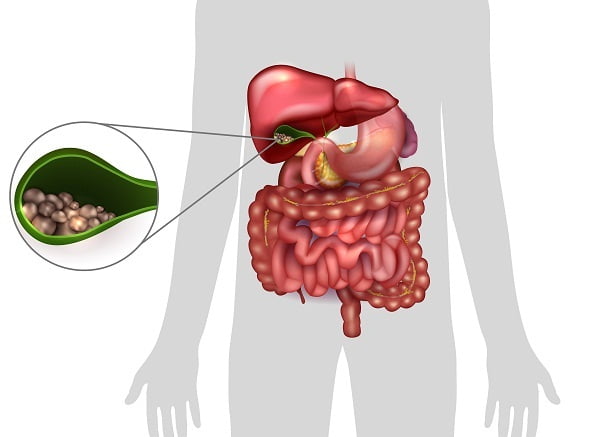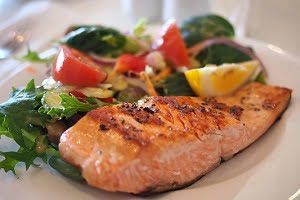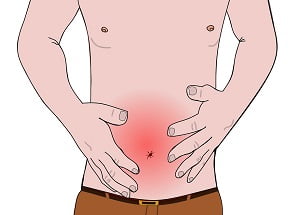What are gallstones?
The gall bladder is a small organ located beneath the liver. It plays a vital role in the proper digestion of fats present in food. It contains bile juice which helps in the digestion of food.
Gallstones are small pieces of solid materials present in the gall bladder. These stones are usually made up of cholesterol.
Gallstones can vary in size and number. A person may have one large stone in his or her gall bladder or many small stones in his bladder. People who show the sign of gallstones need to get their gall bladder removed.
If the stones get trapped in a duct inside the gall bladder, sudden abdominal pain is experienced which can last for 1 to 5 hours.

What are the causes of gallstones?
Gallstones develop in gall bladder due of an imbalance in the chemical composition of the bile inside your gallbladder. There are three basic causes of gallstones in the gall bladder:
- Too much cholesterol in bile juice– bile juice is a mixture of chemicals that helps in digestion of fat and cholesterol. When liver starts to excrete more cholesterol and the bile juice is unable to dissolve it, then the excess of cholesterol hardens and forms crystals forming these stones.
- Your bile contains too much bilirubin– Bilirubin is a chemical that is formed when the body breaks down red blood cells. In some conditions, liver starts making too much bilirubin which cannot be processed by the gall bladder. This also results in the formation of gallstones.
- Concentrated bile due to full gall bladder– It is very important for the gall bladder to empty completely. If it does not occur properly, the concentration of bile increases which leads to the formation of gallstones.
What are the risk factors of gallstones?
There are many risk factors associated with gallstones such as:
Lifestyle related risk factors
There are many lifestyle related risk factors which contribute largely to the formation of gallstones. Some of them are:
- people being overweight or obese
- excessive weight loss in a short time span
- diet with high cholesterol level
- eating a low fiber diet.
Uncontrollable risk factors
There are some factors that cannot be controlled by people. For example:
- Females are at high risk of having gallstones
- Native of America or Mexican-American descent
- People above the age of 60 years are more likely to suffer from gallstone disease
- Having a family history of gallstones.
Medical risk factors
Certain medical conditions also acts as a risk factor for gallstone formation like, such as:
- Patient with diabetes mellitus
- Patient suffering from cirrhosis
- Pregnancy
- Consuming medicines that have estrogen, etc.
What are the different types of gallstones?
There are two types of gallstone.
Cholesterol gallstone
Cholesterol gallstones are the most common type of gallstones found in the gall bladder. It accounts for about 80% of total gallstones found in a patient’s gall bladder. These stones are yellowish-green in color and are generally made up of undissolved cholesterol.
Pigment Stones
Pigment stones are made up of excessive bilirubin that comes from liver in the gall bladder and are generally small and dark brown in color.
What are the symptoms of gallstones?
Asymptomatic gallstone disease is a condition in which the gallstone does not show any symptom. The symptoms of gallstones are visible and experienced only when the stones get stucked in the bile duct. This results in intense constant pain from biliary colic.
The most common symptoms of gallstones are as follows:
Abdominal Pain or Biliary colic
Gallstones can result in sudden, intense pain in the abdomen which can last up to 5 hours. The pain is generally felt in the centre of the abdomen near belly button, under the ribs on the right side. The pain may spread from one part of the body to other part such as shoulder, etc.
People do not experience biliary colic very often and it may take several weeks to experience another pain episode. In some cases, people also suffer from fever, excessive sweat, feeling sick and vomit, etc.
Other Symptoms
Other symptoms observed in patients with gallstones are:
- Rapid heartbeat
- Jaundice
- Itchy skin
- Diarrhea
- Confusion
- Chills and shivering attacks
- Loss of appetite
- Nausea
- Dark colored urine
What are the complications of gallstones?
There are many complications accompanied with gallstones. Some of them are:
Acute cholecystitis
Acute cholecystitis is a condition in which the gallstones block the duct in the gall bladder from where the bile juice flows. This results in the inflammation and infection in the gallbladder.
The symptoms associated with acute cholecystitis are:
- Severe pain in stomach
- Fever
- Appetite loss
- Chills
- Nausea and vomiting
Jaundice
Jaundice in another common complication of gallstones and is caused when the stones get stuck in the bile duct and blocks the flow of bile juice.
The symptoms of jaundice are as follows:
- Pale stools
- Itching
- Yellowing of the skin and eyes
- Dark brown urine
Infection of the bile ducts
Acute cholangitis is also referred to as infection of the bile ducts in which the blocked bile ducts can lead to any bacterial infection. Symptoms of acute cholangitis are as follows:
- Jaundice
- Fever
- Extreme pain in upper abdomen
- Chills
- Itchy skin
Acute pancreatitis
Acute pancreatitis is a condition in which the stones travel from the gall bladder and blocks the opening duct of pancreases. This results in the inflammation of pancreases. Acute pancreatitis is generally accompanied by dull pain in the centre of the abdomen.
Other symptoms of this complication are:
- Diarrhea
- Feeling sick
- Loss of appetite
- High temperature
Gall bladder cancer
The rarest but severe complication of gallstones is gall bladder cancer. People with a family history of gallstones are at a high risk of developing gall bladder cancer.
How are gallstones diagnosed?
Upon hearing patient’s symptoms, the doctor performs a physical examination that includes eye and skin checkup for any color change. He may also advice to undergo some tests so that the presence of stones in the gall bladder can be confirmed.
Diagnostic tests and methods for gallstones
Some major diagnostic tests for gallstones are as follows:
Ultrasound
Ultrasound is by far the best diagnostic test for the examination of gallstones. It uses sound waves for creating images of organs such as the abdomen. This test is very useful in viewing abnormalities in the abdomen and the presence of stones.
Abdominal CT scan
In an abdominal CT scan, the images of liver and the abdominal region are captured and observed for the presence of gallstones.
Gallbladder radionuclide scan
In this test, a radioactive substance is injected into the veins which travels through the blood and reaches gall bladder. A scan is then done which tells about the presence of infection in the gall bladder.
Blood tests
Doctor can also suggest the patient to undertake a blood test to measure the amount of bilirubin in the blood.
Endoscopic retrograde cholangiopancreatography (ERCP)
In this test, a camera and X-rays are used to analyze the health status of bile and pancreatic duct.
How are gallstones treated?
In many cases, the patient does not require any treatment for gallstones unless he or she experiences any symptoms. However, various treatment options are available for the treatment of gallstones. Some of them are:
Surgery
The doctor may perform a laparoscopic gall bladder removal surgery that requires general anesthesia. The surgeon makes 3 or 4 incisions in the abdomen and inserts a small, lighted device into one of the incisions and removes the gall bladder.
The open surgery is performed when the laparoscopic surgery is not convenient in some people. In this method, the gall bladder is removed from the body by making 10-15 cm cut beneath the ribs. General anesthesia is used to perform this surgery.
Patient may experience loose or watery stools after the removal of gall bladder.
Medications
In cases where the patients cannot undergo surgery, certain medicines are prescribed by the doctor such as ursodiol (Actigall, Urso). These medications help in dissolving the stones that are formed by cholesterol but they may take several years to perform their actions.
Shock wave lithotripsy
Shock wave lithotripsy is another option for the treatment of gallstones. A lithotripter machine is used which generates shock waves and passed through a person. These waves can break gallstones into smaller pieces.






